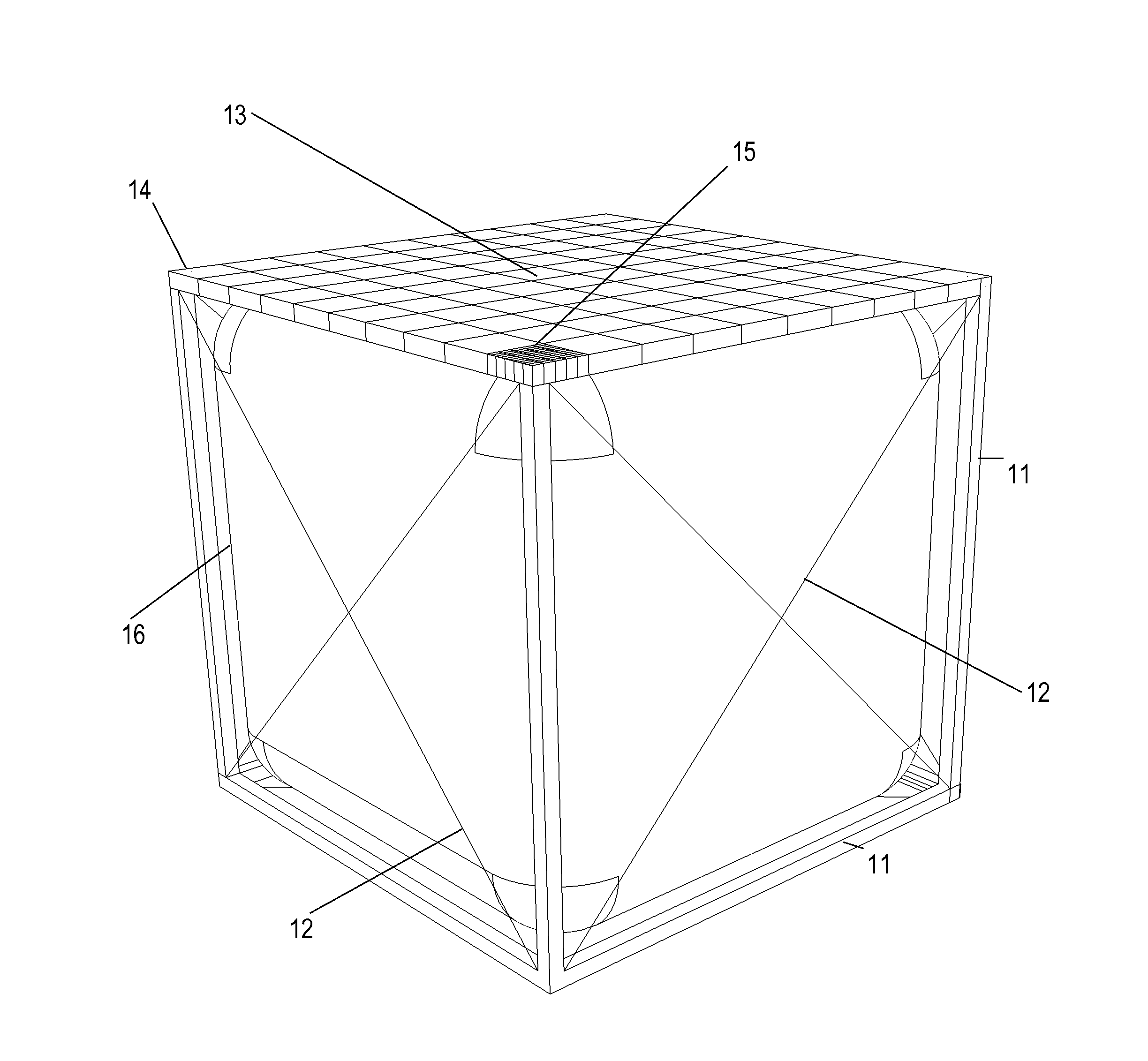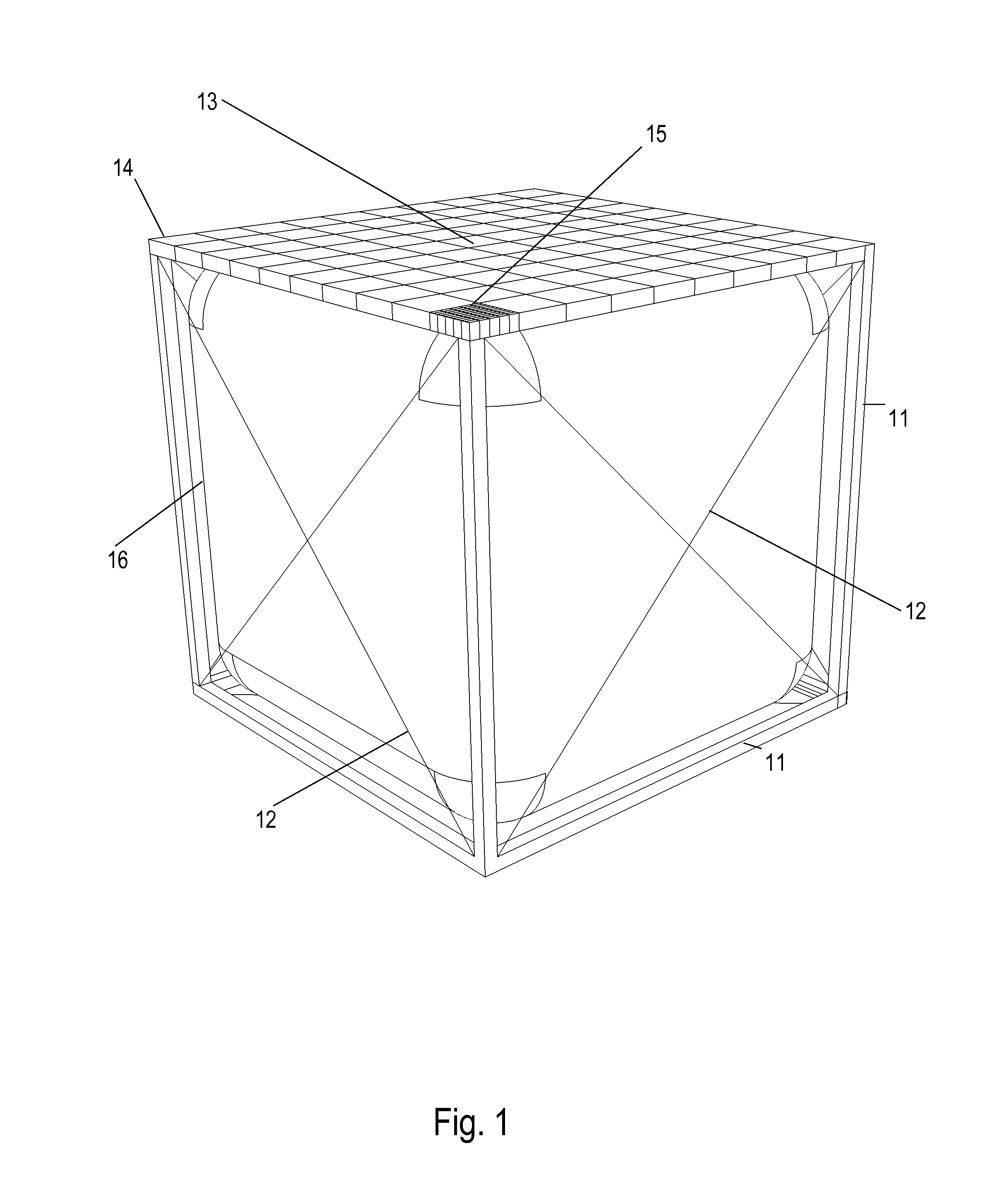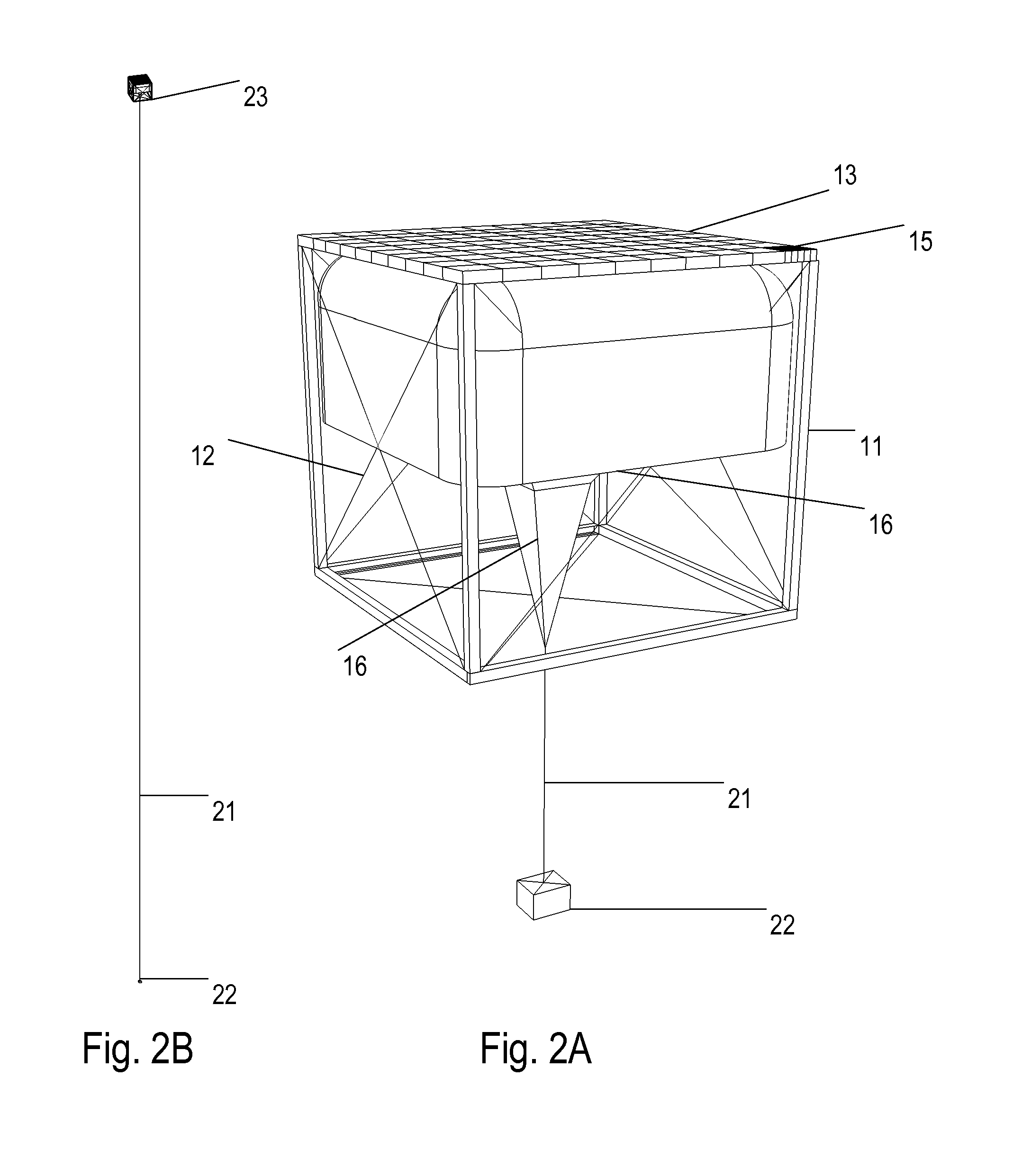High Altitude Gravity Energy Storage
a gravity energy storage and high-altitude technology, applied in the field of gravity energy storage, can solve the problems of limiting scale and/or location, cost, and no energy storage solution that is close to the source of the energy,
- Summary
- Abstract
- Description
- Claims
- Application Information
AI Technical Summary
Benefits of technology
Problems solved by technology
Method used
Image
Examples
Embodiment Construction
[0057]FIG. 1 shows a perspective view of a buoyant platform module 23 designed in accordance with the present invention. It consists of a rigid framework formed from struts 11, top surface 13 and cross bracing cables 12. The interior of the framework holds a gas bag 16, which contains the buoyancy gas, commonly hydrogen or helium. The top surface 13 is assembled from smaller structural sections 14. The top surface of each structural section 14 can support an array of photovoltaic panels 15 that can either partially or completely cover the top surface 13. The photovoltaic panels 15 are connected electrically with wires, DC-DC voltage converters, combiners and electricity distribution hardware to provide high voltage (HV) power output from the platform. This HV output can be AC or DC. In this embodiment when fully assembled, the overall structure is a rigid cross braced cube. The length of the cube is in the region of 100 meters. The dimensions are set by the buoyancy available at the...
PUM
 Login to View More
Login to View More Abstract
Description
Claims
Application Information
 Login to View More
Login to View More - R&D
- Intellectual Property
- Life Sciences
- Materials
- Tech Scout
- Unparalleled Data Quality
- Higher Quality Content
- 60% Fewer Hallucinations
Browse by: Latest US Patents, China's latest patents, Technical Efficacy Thesaurus, Application Domain, Technology Topic, Popular Technical Reports.
© 2025 PatSnap. All rights reserved.Legal|Privacy policy|Modern Slavery Act Transparency Statement|Sitemap|About US| Contact US: help@patsnap.com



